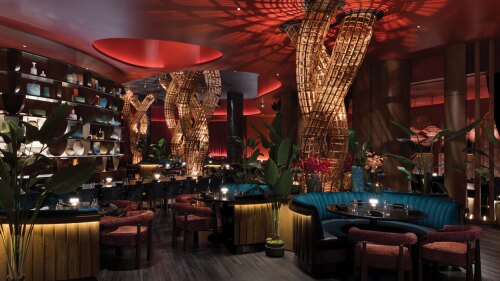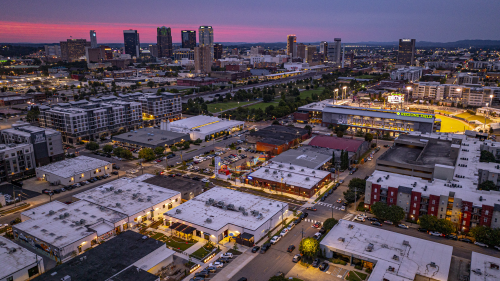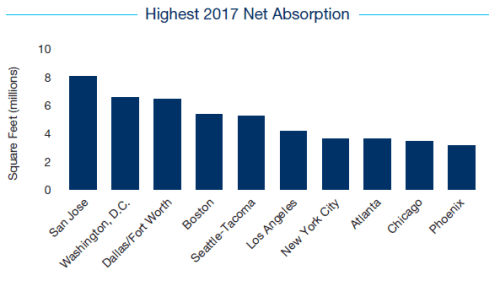Property Types
Hotels and Resorts
The hotel industry in the United States faces complex challenges in 2025, according to Jan Freitag, national director of hospitality analytics for the CoStar Group. During the “State of the U.S. Hotel Industry” presentation at the ULI 2025 Spring Meeting in Denver, Colorado, Freitag highlighted the challenges facing the hotel business amid macroeconomic uncertainty.
Once a sprawling expanse of uncharted land, Las Vegas, Nevada, has evolved into the entertainment capital of the world, a gaming super-hub, and a premier destination for sports. This remarkable transformation didn’t happen overnight; it stemmed from decades of strategic planning, investment, and visionary zoning recommendations.
Las Vegas is unlike any other place in America. Each year it draws more than 40 million visitors to the dazzling casinos and hotels that “turn night into daytime”—and transform the city into a glittering jewel in the desert. With 164,000 hotel rooms, Las Vegas is the largest hospitality market in the U.S.—outpacing Orlando, Florida, the next biggest market, by approximately 15 percent, according to JLL.
Industrial
Standing in the shadow of Regions Field and within earshot of Railroad Park, Birmingham’s Urban Supply hints at what the next chapter of downtown life could look like. Once-quiet brick warehouses are being steadily reimagined into patios, storefronts, and gathering spaces along a new pedestrian alley. Early tenants have begun to open their doors, and programming is slowly bringing people into the district. While the project is still in its early stages, the framework is in place for a vibrant hub that will grow block by block in the years ahead.
What trends are shaping the future of the industrial sector? Four experts from ULI’s Industrial and Office Park Development Council talk about the industrial submarkets and property types that offer the greatest opportunities, challenges developers face in bringing new projects to market, ways artificial intelligence and emerging technologies are reshaping the sector, tenant priorities, and other key trends.
After a quiet first half of 2024, CMBS originations increased 59 percent in Q3 on a year-over-year basis, according to the Mortgage Bankers Association’s Quarterly Survey.
Mixed-Use
Denver’s historic train station is being re-created as a multimodal transit center, hotel, and shopping venue. And it is already spurring development in the Mile High City.
Natural assets, combined with inventive design, help transform a global gateway.
Generation Y and Boomers are both challenging assumptions about the primacy of suburban homeownership. More than ever, renters and homebuyers are focusing on a sense of place and amenities rather than on the size of their homes.
Multifamily
Alternative, or nonbank, lenders are filling in gaps in the mortgage world where they find them, whether it be the result of increasing capital requirements for banks, consolidation in the banking sector, or a pullback by commercial mortgage–backed securities lenders. Last year alone, the five largest players in the sector collectively funded some $20 billion of interim loans. Plus, interest rate survey data from Trepp.
U.S. multifamily rents increased in May for the third month in a row, according to Yardi Matrix’s monthly survey of 121 markets, but the rate of growth continues to decelerate. On a year-over-year basis, U.S. monthly rents were up 1.5 percent nationwide in May. The year-over-year growth rate has decreased for 13 straight months since peaking at 5.4 percent in April 2016.
The “Markets to Watch” section of the 2017 edition of Emerging Trends in Real Estate® offers an expanded look at all 78 markets included in this year’s survey, including the industry outlook for the primary markets in the U.S. Pacific Northwest. Here is the industry outlook for the primary markets in the U.S. Pacific Northwest.
Office
Hines is widely known for building glass-and-steel skyscrapers. So, it would seem that the developer is going a bit against the grain in its latest endeavor with a boutique office property in Minneapolis made largely of wood.
Alphabet, Amazon, and Facebook are just a few of the tech giants snapping up space.
San Jose, California, and Seattle-Tacoma, Washington, hold the top two spots in Marcus & Millichap’s latest National Office Property Index (NOPI). Both markets boast vacancy rates below the national average and significant completions forecast for 2017.
Residental
The low-income housing tax credit (LIHTC) has helped house millions, and it remains a vital driver of development. The 30-year track record of the LIHTC offers compelling evidence that affordable housing is good business, a stable asset class, and a strong driver of economic activity and neighborhood improvement.
As the Denver metropolitan area has topped 3 million residents, potentially accelerating toward 4 million, a sustainable land use template for future mobility and economic, social, and environmental health is emerging within the framework of the 122-mile (196 km) FasTracks rail and bus rapid transit network, which includes expansion with five new transit lines this year. A ULI Colorado event in early November attracted participants from Colorado and beyond to tour various transit-oriented development sites and hear about lessons learned and future trends.
A new report from the ULI Terwilliger Center says that U.S. suburban housing markets are well positioned to remain preferred places to live and work over the coming decades, even as urban cores and downtown neighborhoods continue to attract new residents.
Retail
For decades, civic leaders have tried to revitalize Market Street, San Francisco’s central thoroughfare, only to see their efforts founder. “I sometimes call it the great white whale of San Francisco,” says Eric Tao, managing partner at L37 Development in San Francisco and co-chair of ULI San Francisco. “Every new mayor, every new planning director, every new economic development director has chased that white whale.” This year, however, an international competition of ideas hosted and run by ULI San Francisco, with support from the ULI Foundation, generated fresh momentum for reimagining the boulevard. The competition drew 173 submissions from nine countries and sparked new conversations about the future of downtown San Francisco.
The OAK project began in 2009, when a development firm set their sights on the corner of Northwest Expressway and North Pennsylvania Avenue, the state’s most important and busiest retail intersection. As the region’s only parcel capable of supporting a vertically integrated project of this scale and density, that land represented an opportunity to create something truly special.
As aging retail continue to evolve, one increasingly popular trend has been to redesign malls as town centers—recalling a time when such commercial districts were the heart and soul of a community. Mall–to–town center retrofits are emerging throughout the nation, especially in suburban communities, where pedestrian-friendly, mixed-use environments are highly attractive to millennials now raising families.



















